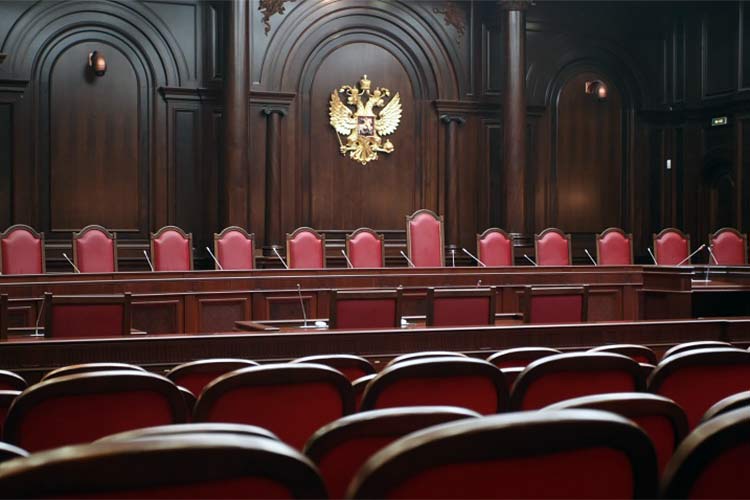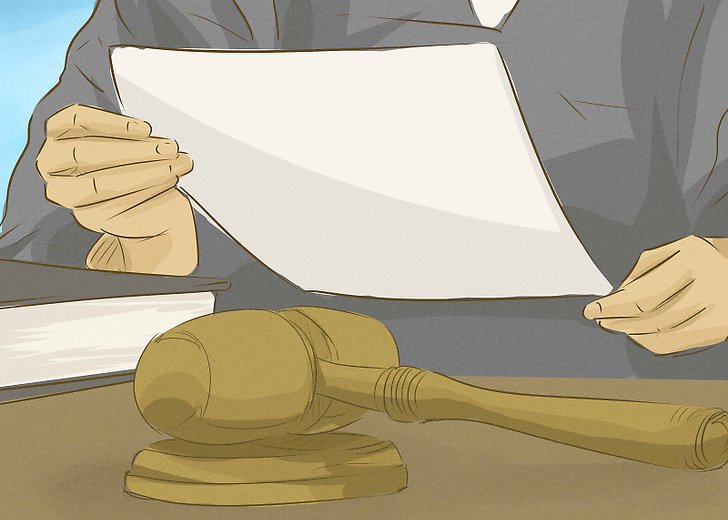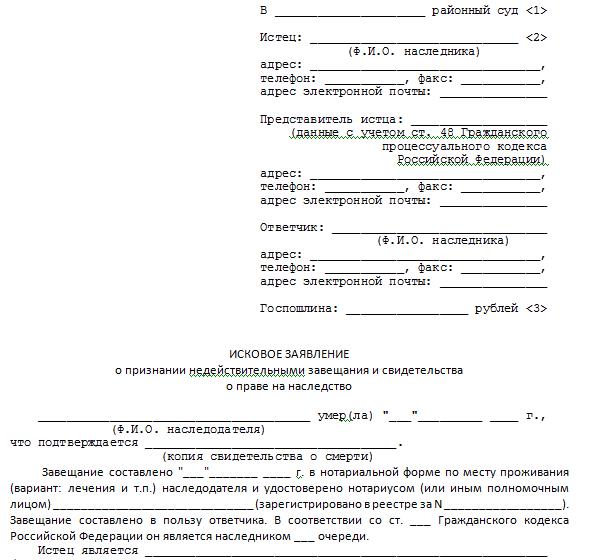Art. 125 APC covers the rules for writing a lawsuit in an arbitration court. It determines its structure and content. The provisions of the article interact with other provisions of the code. In particular, its features are prescribed for claims to challenge regulatory acts.
How to understand the text of the law
Art. 125 APC defines the main provisions that should be guided by those wishing to file a claim, subject to consideration by arbitration justice. Some rules may not seem completely clear. If the demand is clear enough, how to fulfill it so that the judge accepts the claim or does not reject it during the proceedings on formal grounds? Then you have to start all over again.

The arbitral tribunals provide clarifications on their websites, where letters are periodically posted on issues arising from the filing of claims or petitions. Now the clarification function is performed by the Armed Forces of the Russian Federation.
Should I contact a lawyer
A person with practical skills will cope with the task faster and better. Therefore, it is better to consult a specialist. But difficulties with money can make you write an application yourself. In this case, you will have to study more than one article of the code, because they are all interconnected and understanding of one point of the law will come after familiarization with other provisions.
Application form
Art. 125 APC RF, Part 1 pays attention to the application form. Earlier in the procedural codes, it was noted that it is stated on paper and either printed using technical means (on a computer and then printed), or written manually. Further sent by mail or courier, or handed personally to the staff of the office.
Now, changes have been made, and the plaintiff writes a statement on paper in a convenient way to him or submits it electronically with attached electronic copies of documents.

The Armed Forces of the Russian Federation issued regulations on the procedure for filing documents in electronic form. True, it is available to those who constantly turn to the court. An electronic digital signature is placed on documents in electronic form. Its acquisition costs several thousand rubles.
The materials are uploaded directly to the court’s website through a special form, which makes life easier for both legal representatives and court employees.
All other paragraphs of the application are set out in Part 2 of Art. 125 APC of the Russian Federation.
Which court to apply to
The second paragraph in the application marks the name of the arbitration court to which the application is transmitted. The law obliges to file claims within the framework of the territorial liability of the court. General rule: the materials are submitted to the court at the location of the defendant - the place of registration of the IP or the address of the legal entity indicated in the constituent or registration documents.
There are clauses on contractual jurisdiction when the parties decide in advance in the contract which court will consider the dispute that arose between them. Some provisions give the right to choose a court to the plaintiff.
Art. 125 APC does not say anything about jurisdiction and jurisdiction of disputes - this is already regulated by other provisions of the code.
In the Russian Federation, one arbitration court serves one region, so there are no difficulties with jurisdiction.

All arbitration courts are combined into a single information system. The portal has information on all institutions: opening hours, reception schedule in the office, additional explanations. The last paragraph depends on the mistakes most often made by the applicants.
Information about the plaintiff
In Art. 125 APC regarding the information about the plaintiff states the following:
- full name of the organization, according to the constituent or registration documents;
- full name, if the plaintiff is a person (usually IP);
- location, according to official documents;
- actual place of residence, if we are talking about individual entrepreneurs;
- date and place of birth, if it is about SP;
- place of work and (or) registration as an entrepreneur;
- telephone, fax and email numbers.
The law does not say anything about the details of a bank account, in practice it is also desirable to indicate them. Then you still have to file a separate application with the court or the bailiff, so that you know where to transfer the money.
The absence of any of the listed information is a reason to return the claim without consideration.
Respondent Details
Art. 125 APC RF less strict, setting out requirements for information about the defendant.
It is only necessary to provide information about the name of the organization or full name, if the defendant is a person, as well as his location or place of residence, respectively.

In fact, the plaintiff is forced to provide a similar amount of information. However, this is not so difficult. In contracts, correspondence materials all this information is available. If the judge returns the statement to the defendant because there is no information that he would like to receive, his actions may be appealed.
Grounds for action
Under the grounds are understood the circumstances due to which the plaintiff is forced to appeal to the court, and the evidence on which he relies. If it is not clear from the claim why the dispute arose, then the judge will consider that the requirements are not fulfilled.
We give the following examples. The plaintiff believes that the defendant, in his opinion, did not comply with the terms of the agreement or did so in bad faith. Another plaintiff claims that the actions of the defendant caused him damage.
In the first situation, the circumstances that served as the basis are non-performance of the contract, and in the second - the infliction of harm. In addition, in some cases, as in the second example, the plaintiff must prove the fact of violation and the relationship between the actions of the defendant and the damage, as well as calculate its size.

Art. 125 APC RF obliges to refer to evidence directly in the text of the claim. In the civil process, it is enough to attach the corresponding document. Because of such differences, even lawyers make mistakes by confusing the provisions of regulations.
The meaning of how the claim is formulated
It is necessary to provide a detailed statement of circumstances, links to evidence in support of the arguments. The fate of the case depends on the degree of completeness of the description of events and the volume of the evidence base.
In some cases, the document may be one, but it is enough, or there may be many documents, on the contrary, but all of them are indirectly related to the subject of the proceedings and do not allow to see the full picture. This applies to witness testimony and examination results.

References to current legislation are equally important. From a formal point of view, it is enough to refer to the articles of the Civil Code, which have universal significance. On the other hand, the relations from which the dispute arose can be regulated by normative acts objectively known to a narrow circle of people. They must also be indicated. Another option is that a normative act can only be explained by a person who is an expert in the relevant field, in particular, in the energy sector.
The document does not limit the number of references made by the parties in the lawsuit or recall to it. At the same time, a high-quality presentation of regulatory material speeds up the consideration of the case and helps the judge to delve deeply into the dispute.
Thus, the form and content of the statement of claim cannot be considered a trifle that impedes the appeal to the court.

Subject of claim or claim
The purpose of a lawsuit or application filed with the court is to achieve a specific result. The requirements of the plaintiff to the defendant are set out after the main part of the document, which sets out the circumstances, provides links to evidence and legislation.
The word "I ask" is put under the text, then the requirements are formed. How to formulate them?

The request should be based on the law. For example, if the law speaks of recovering monetary debt, then the claim is formulated according to the scheme: recover from the defendant, then mention the amount, indicating it in letters and not numbers (numbers can be put in brackets next to each other).
If the law speaks about reclamation of property, it means that they write in a lawsuit: please oblige me to transfer, etc.
If we are talking about real estate, land, the requirements indicate their addresses, area and other information.
How to formulate a request if there is no experience or the sample found is not entirely clear?
It is useful for the plaintiff to familiarize themselves with the language used by the judges in similar cases. You need to look at the text of the judicial act after the word “decided” or “decided”.
The number and sequence of requirements
A lawsuit may involve one single claim, for example, to recover funds. In more complex cases, the protection of the right or redress is combined with other actions.
For example, Rosreestr refuses to register a right arising by virtue of an agreement. The plaintiff makes two claims:
- recognize actions defendant illegal;
- oblige him to register the right.
There are cases where there are 3 or 4 claims or even more, depending on what violations were committed and what actions are needed to restore the rights of the plaintiff.
It is enough to skip one of the requirements in the sequence so that the others are denied or a positive court decision does not make practical sense.
The preparation of the lawsuit is associated with expenses for the representative, examination and other things. And among the requirements may be a request for recovery of expenses.
The plaintiff, according to the law, has the right to request the recovery of part of the costs. If the interests of budgetary organizations are affected, their representatives or the prosecutor's office representing them are required to request the court to recover in full.
All described moments are noted in Art. 125 APC RF with comments.
Application Price
Legislation obliges the plaintiff to indicate the price of the claim. It is calculated from the amount indicated by the plaintiff, or the valuation of the disputed property. The appraiser’s report attached to the lawsuit is enough for the judge to make sure that the price is not underestimated. If the amount consists of several points, it is advisable to provide a calculation, by the way, its presence in the lawsuit is a separate requirement.
Some claims are accepted as not priced. Why did the legislator introduce such a requirement?
The agro-industrial complex and other procedural codes provide for the payment by the plaintiff of the state fee for the consideration of the claim. She goes to finance the judicial system. Based on the price and the calculation of the duty. Specific amounts are established by the Tax Code in the relevant section.
If the plaintiff is not able to pay it, the court has the right to reduce the size or completely exempt the organization or entrepreneur from payment.
Attempts to resolve a dispute without judicial intervention
Art. 125 APC of the Russian Federation in the current version contains an indication of compliance with pre-trial or claim procedure.
The first way means resolving the issue by filing a complaint with a higher authority. For example, file a complaint about the management of Rosreestr with a higher authority, and then go to court. That is, use the administrative method of resolving the dispute.
A similar procedure is provided by the tax code. The payer submits a complaint to a higher department, there the papers are examined, and a decision is made. A part of the complaints is considered substantiated, and the dispute does not go to the judicial stage.
The second method is provided for in disputes between business entities. The representative of the company or organization sends a complaint, and waits for a response at the time specified in the document.
The agreement between the parties may provide for a claim procedure, worked out differently, so long as it does not contradict the law.
Other clauses of the statement
If an application for interim measures was filed with the lawsuit, and the court agreed with them, a corresponding note is made in the document.
Among the requirements may be made requests for the demand for evidence, the appointment of expertise, etc.
Another plaintiff must make an inventory of the attached documents. The procedure for transferring documents must correspond to their actual location, which will reduce pastime in the court registry.
Part 3, Art. 125 APC indicates the need to attach evidence of the dispatch of the claim and copies of the documents attached to it to the defendant and third parties. What is going on in practice? In life, you need to send the entire list of documents on which the lawsuit is based. In evidence, an inventory is attached, certified by the seal of the mail officer.
If the lists of those sent to the court and other participants in the proceedings differ, the judge will return the claim without consideration.
